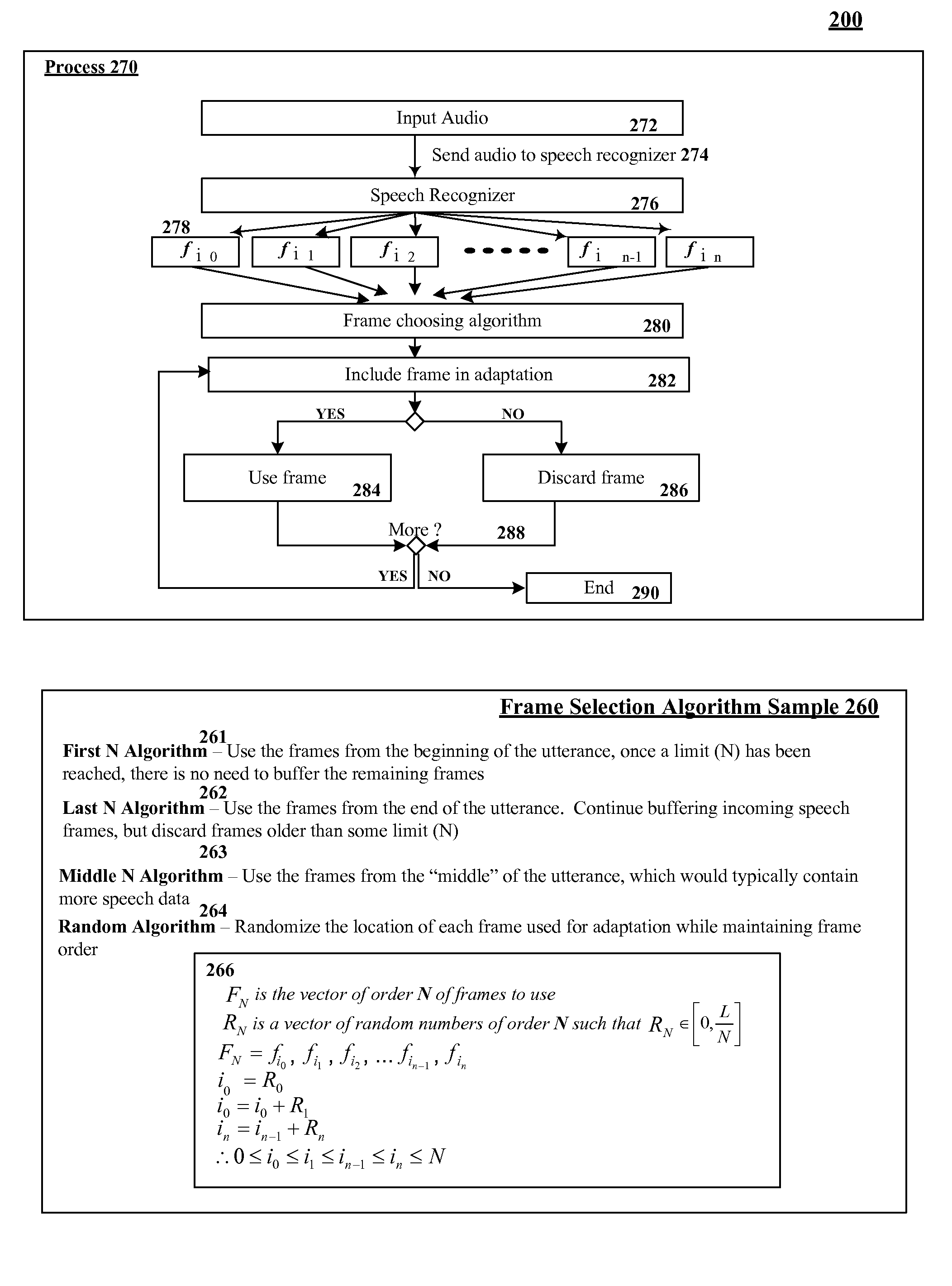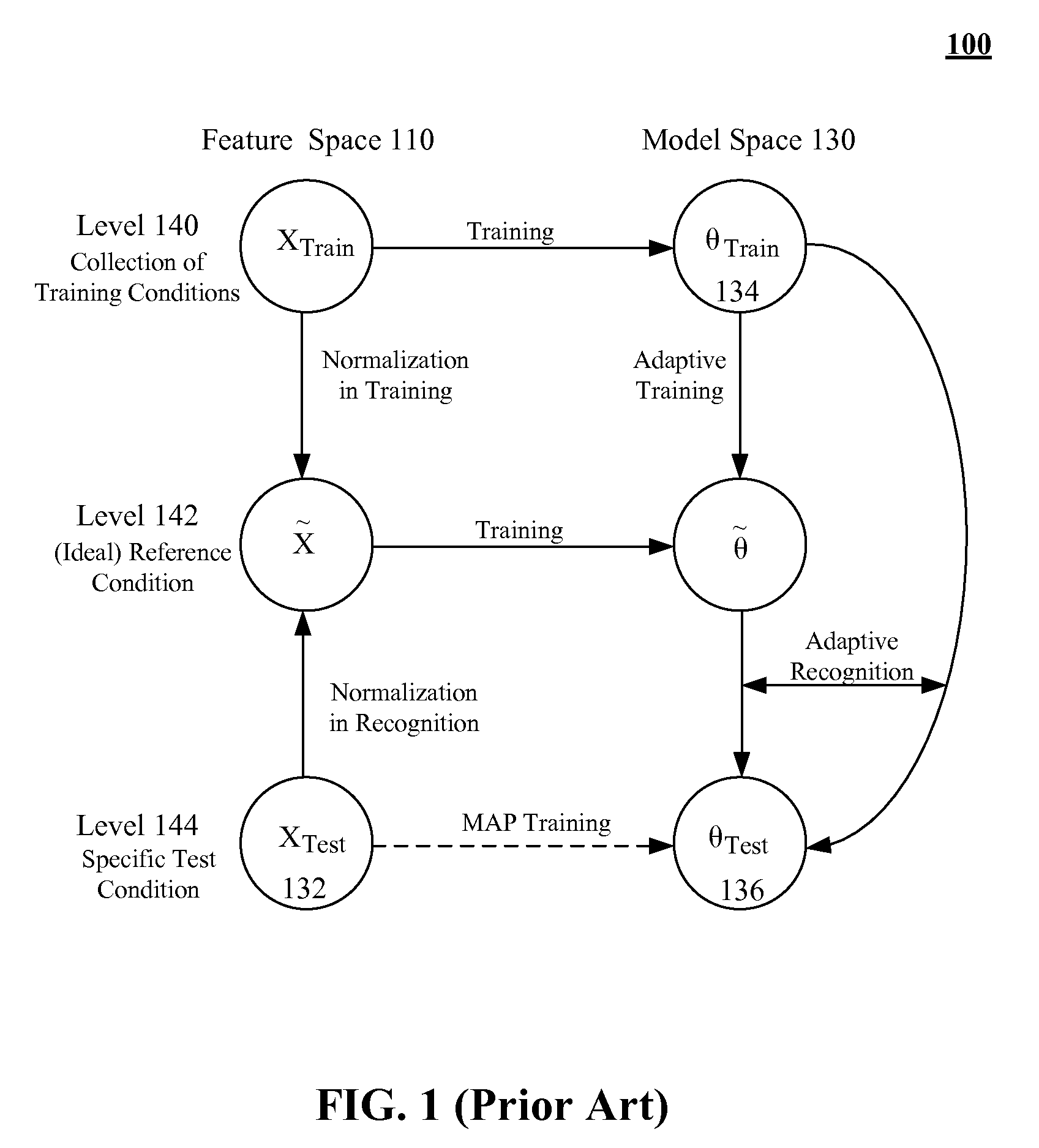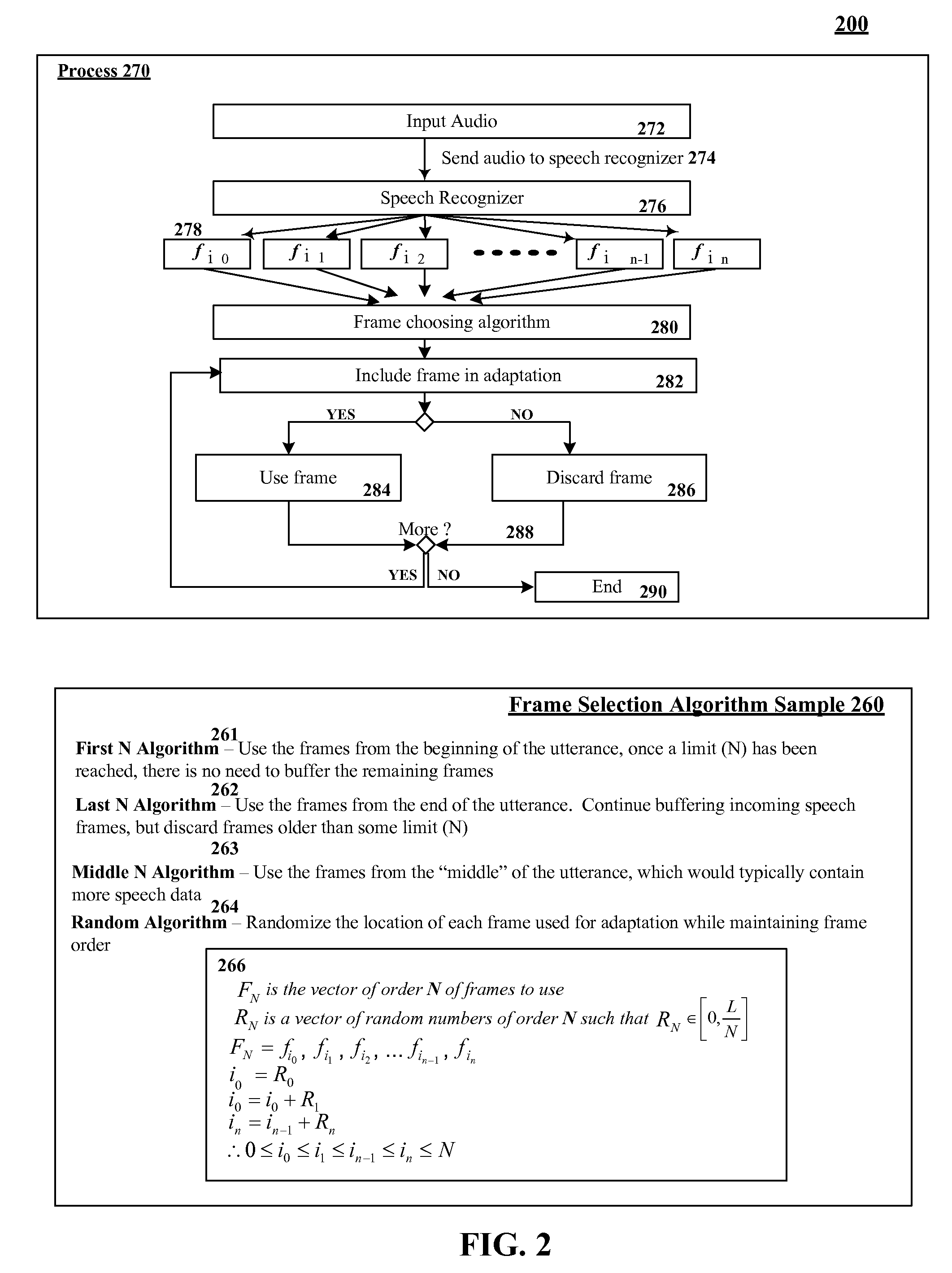Resource conservative transformation based unsupervised speaker adaptation
a resource conservative and speaker technology, applied in the field of speech processing, can solve the problems of unsupervised speaker adaptation, significant accuracy gain, and relatively resource-intensive computing operation of computing transformation, and achieve the effects of low memory, substantial computational savings, and low cos
- Summary
- Abstract
- Description
- Claims
- Application Information
AI Technical Summary
Benefits of technology
Problems solved by technology
Method used
Image
Examples
Embodiment Construction
[0019]FIG. 2 is a schematic diagram of a resource conservative speaker adaptation system 200 in accordance with an embodiment of the inventive arrangements disclosed herein. In system 200, audio input used by a speech processing system can be initially transferred in the frequency domain, where it is segmented into frames, which are labeled as speech or silence frames. A transformation can be applied on the feature vectors (MFCC) of the speech frames. During speech recognition processing, feature vector information that is extracted from the audio input can be cached. After a current speech recognition result is produced for a portion of the audio input, a new transformation that is to be applied to the next utterance can be calculated. This calculation can be performed by aligning the most recent recognition result with the cached feature vector information. Then, using a selection algorithm, N amount of the feature vector data can be selected. This N amount of data can be used to ...
PUM
| Property | Measurement | Unit |
|---|---|---|
| length | aaaaa | aaaaa |
| time | aaaaa | aaaaa |
| size | aaaaa | aaaaa |
Abstract
Description
Claims
Application Information
 Login to View More
Login to View More - R&D
- Intellectual Property
- Life Sciences
- Materials
- Tech Scout
- Unparalleled Data Quality
- Higher Quality Content
- 60% Fewer Hallucinations
Browse by: Latest US Patents, China's latest patents, Technical Efficacy Thesaurus, Application Domain, Technology Topic, Popular Technical Reports.
© 2025 PatSnap. All rights reserved.Legal|Privacy policy|Modern Slavery Act Transparency Statement|Sitemap|About US| Contact US: help@patsnap.com



